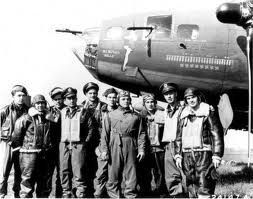MEMPHIS BELLE
SUBJECTS — Aviation; U.S./ 1941 – 1945;
SOCIAL-EMOTIONAL LEARNING — Leadership; Courage in War;
MORAL-ETHICAL EMPHASIS — Responsibility.
AGE: 12+; MPAA Rating — PG-13;
Drama; 1990; 107 minutes; Color.
There is NO AI content on this website. All content on TeachWithMovies.org has been written by human beings.

SUBJECTS — Aviation; U.S./ 1941 – 1945;
SOCIAL-EMOTIONAL LEARNING — Leadership; Courage in War;
MORAL-ETHICAL EMPHASIS — Responsibility.
AGE: 12+; MPAA Rating — PG-13;
Drama; 1990; 107 minutes; Color.

This movie is based on the story of the crew of the Memphis Belle, one of the first B-17 crews to complete 25 daylight bombing raids over Germany and occupied Europe during WWII. The film is a fictional account of their 25th and last combat mission. If the crew can survive this flight, they will take the plane on a publicity tour throughout the U.S. Their new mission will be a much safer one, to sell war bonds.
Selected Awards: This film is listed in the National Film Registry of the U.S. Library of Congress as a “culturally, historically or aesthetically significant” film.
Featured Actors: Matthew Modine, John Lithgow, Eric Stoltz, Sean Astin, Harry Connick Jr., Reed Edward Diamond, Tate Donovan, D.B. Sweeney, Billy Zane, David Strathairn, Jane Horrocks, Courtney Gains.
Director: Michael Caton-Jones.
“Memphis Belle” is set in 1943, when long-range fighter escorts for the bombers flying over continental Europe were not yet available. The losses of planes and crews were heavy. The emotional toll on the surviving men grew with each mission. This film looks at the daylight bombing campaign from the standpoint of the crew members. We get a feeling for what it was like to fly in a B-17 during a mission.
This movie will have the best effect if seen in conjunction with Dawn Patrol (about an air squadron during WWI) and Twelve O’Clock High (about the problems faced by the commander of a WWII bomber squadron assigned to daylight bombing).
MODERATE. There are several brief references to “getting laid,” condoms etc. There is quite a bit of death, a little gore and a lot of profanity.
The film has been criticized by surviving members of the crew of the actual Memphis Belle as glamorizing their experience. The pilot, Captain Morgan, recalls that there was no partying, no telling jokes on the airplane and no music played on flights. It was all very businesslike. Many critics panned the film as trite for showing the same thing as several earlier films. However, the production values are high and these criticisms do not apply to using the film for teaching purposes.
See the Guide to Twelve O’Clock High.
Savings bonds, sold to the public, were a major source of funding for both WWI and WWII. Savings Bonds are sold in denominations of $25 to $10,000.
The public debt of the U.S. after WWI was $25.5 billion. After WWII it was $260.12 billion. During the Cold War, the United States purposefully increased pressure on the Soviet economy by maintaining a large military establishment, an effort the Soviets felt required to match. The cost of the Soviet military was one of the major factors leading to the collapse of the Soviet Union. During the Cold War, the U.S. public debt grew to more than $5 trillion. Military expenditures, along with entitlement programs, were the major causes of this debt.
The Memphis Belle was named after the girlfriend of the pilot, Robert Morgan.
Daylight bombing during the early days of World War II was very dangerous. In the many months before fighter escorts were available the average tour of duty for a bomber crew was 25 missions while the average survival rate was only 15 missions. Was it good policy for the leaders of the U.S. Army Air Force to put their bomber crews in this situation?
Suggested Response:
The easy answer is no. However, there were many considerations that justify the actions of the Army.
First, this was a brand new experience. The U.S. had never mounted this type of sustained massive bombing campaign before. The casualty rates, primarily from German fighter planes shooting down the bombers, were not known beforehand.
Second, the bombing was for the purpose of reducing the ability of Axis war industries to supply their troops with equipment, weapons and ammunition. It was believed at the time that the increased precision that daylight raids allowed would cause greater damage to enemy industries and help allied troops on the ground. This proved to be untrue because the Germans were able to get their factories back up and running fairly quickly after they were bombed, but that was not known at the time. In an all out war, military units and individual soldiers are expendable for the benefit of the war effort.
Third, after the high casualties in the raids on the ball bearing factories, daylight bombing was curtailed until fighter escorts were available that could protect the bombers for the entirety of their flights. See Learning Guides to Twelve O’Clock High and Tuskegee Airmen.
1. See Discussion Questions for Use With any Film that is a Work of Fiction.
2. Explain the role of technological advancement in fighting World War II.
Discussion Questions Relating to Ethical Issues will facilitate the use of this film to teach ethical principles and critical viewing. Additional questions are set out below.
(Do what you are supposed to do; Persevere: keep on trying!; Always do your best; Use self-control; Be self-disciplined; Think before you act — consider the consequences; Be accountable for your choices)
1. If you had known the risks, would you have volunteered to be a bomber pilot in the early days of WWII?
2. What would our lives be like today if the Americans who served in WWII had sought to evade their responsibilities?
See, Tuskegee Airmen, Twelve O’Clock High, and Dawn Patrol. The 1943 documentary, “The Memphis Belle,” directed by William Wyler, is rated as excellent by many viewers, including former crew members of the Memphis Belle.